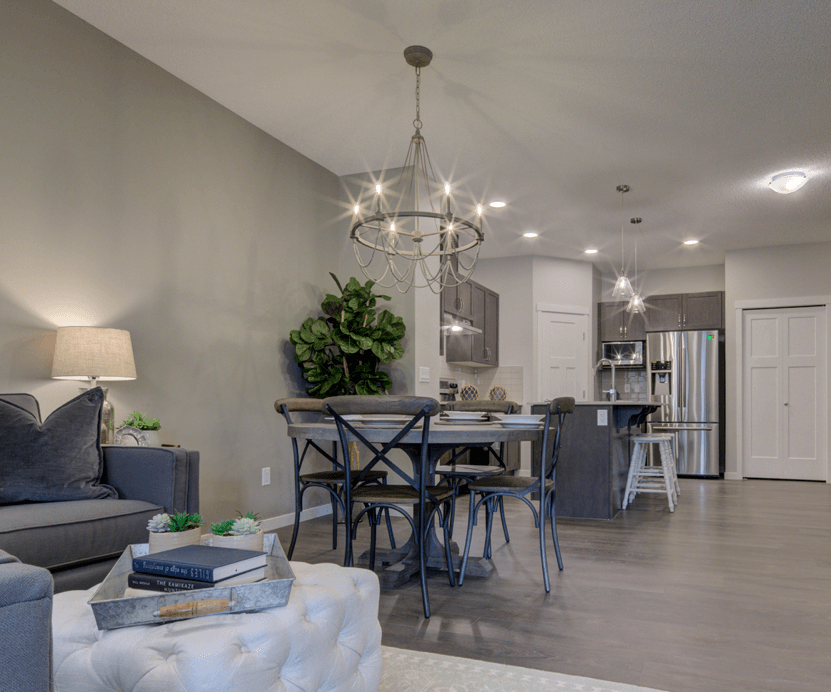As you start shopping for your first home, you know that you’re making an important decision that requires careful research. It’s smart to start your exploration with a look at some floor plans.
The floor plan dictates the layout of the home, and this layout can have a big impact on how happy you are with your home. Many first-time buyers don’t know exactly what to look for, so we’ve set out these guidelines to help you find something that’s right for you.
List Your Needs and Wants
Having a specific list of things you need and want in a home is very important when you go and tour show homes, as you’ll have a better idea which builder can provide you with what you want.
Be as specific as possible when thinking about your needs. You’ll want to start with some basics, like the number of bedrooms and bathrooms, but then dig a bit deeper. For instance, think about how you’ll use your kitchen. If you primarily have one chef in the family, the smaller kitchen might be more suited for you, whereas if your household loves to cook together you might want to look for a bigger kitchen.
Remember to also include extra features you might need and want, like a home office, a playroom for the kids, or sliding doors onto the patio or balcony.
Tour Show Homes
It’s best to take some time to tour as many show homes as you can, paying special attention to how the space “feels” when compared to how the floor plan “looks” on paper. Picture you and your family living in the space, and look for details that you might not have been thinking about, such as the size of the mudroom in a townhome. This helps you nail down the things that are important to you.
 Look Beyond Square Footage
Look Beyond Square Footage
First-time buyers can get stuck on the numbers. They think that they couldn’t possibly live in a home that’s under a certain square footage. In reality, a home’s square footage doesn’t always tell the whole story.
When you limit your searches to something like 1,500 square feet, you might miss a great condo that’s only 1,490. Remember, too, that townhomes can include a finished basement that could add 500-1,000 square feet to the home.
Ask About Alternatives
Some builders have set floor plans you have to choose from, while others give you a bit more homes with alternate floor plans for the same home model. Even if they don’t allow a big change like that, the builder could have different layouts available for certain rooms.
The type of home you’re looking for will also play a large role here, as naturally, a newly-built townhome will have a lot more room for flexibility than a condo, which may have to be built to a specific design.
Ignore Design Details
When you look at homes, it’s sometimes hard to ignore the design details. You might hate the kitchen because it seems dark or feel put off by the colour on the walls. As long as the home you’re moving into isn’t a completed move-in ready home, these things are all changeable. In most cases when you buy your home, you’ll get to pick out the exact materials and colours you want to use. Remember to focus on the floor plan of the home when you’re touring show homes, not the finished decor.
 Be Critical About Extras
Be Critical About Extras
You don’t want to pay for things you won’t use, so think very carefully about any home features that aren’t on your original list of needs and wants. Could you get a better price on a home that doesn’t include that feature or is it a part of the package? Could the builder take that away and add something you’d like even more? If there’s any confusion about whether there’s a better choice available, be sure to talk to the Area Sales Manager.
Plan to Stay
People often think about their first home as a “starter home”, which means that they often purchase a home that’s missing some of the features they might need in the future, like extra bedrooms for a growing family. If you’re taking the time and spending the money to buy your first home, you should probably plan on spending at least five years in that home. What will your life look like in five years? Will the floor plans you’re looking at be able to accommodate those needs? Is it more important for you to find something affordable that will allow you to start building equity quickly? Choose a floor plan with the future in mind.
At first glance, floor plans can look similar, but when you really think about your needs, you’ll find that certain features will start to rise to the top.
{{cta(‘bf36d1ad-aee8-4adc-b7a9-a32ba68fe3f8′,’justifycenter’)}}

